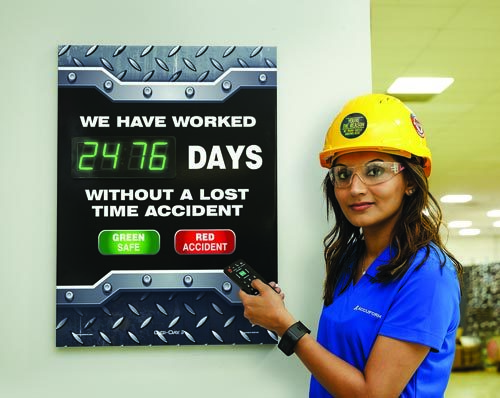The future of safety signs and labels
What does the future of safety signs and labels look like?

Responding is Mauriah Lamia, content and social media manager, Accuform, Brooksville, FL.
Today’s workplace is more demanding than ever before. The desire for workers to do more at a faster pace can compromise safety. Year after year, injuries and OSHA violations remain in a perpetual cycle. However, the future of safety signs and labels can help change that.
Safety communication is critical to making the world a safer place. If the messages don’t resonate, they’ll never reinforce safety. Safety signs and labels have to conform to today’s fast-changing workplace as well.
Innovative technologies, continuous testing, designing and printing solutions are the future of facility safety identification. Safety identification solutions that will simplify “the impossible” and rethink “the possible” will continue to help create a better, safer tomorrow.
Safety is an important language that must stick
Employers have an important role, including protecting workers. Not only is this an obligation, it’s the law. Per the Occupational Safety and Health Act of 1970, employers have a responsibility to provide a safe workplace. Among many others tools, the use of color codes, posters, labels, signs or safety tags is required to warn employees of potential hazards.
The safety identification products employers post need to be seen to reinforce regulations and standards. If the messages don’t resonate with workers, they’ll never pay attention to them. Not only do the messages need to be concise and signs and labels need to be durable, they also need to be eye-catching. Look for the most durable materials, bold messages and cutting-edge products to help keep workers safe.
For instance, if an employer needs a safety floor sign for an uneven, damp area in a warehouse, electronic signage options are available. Never settle for any safety message or the most economical material – safety is priceless, and the message should be seen and resonate with workers.
Innovative technologies
Through innovative technologies, signs are more than messages printed on various materials. Signs have advanced to digital capacities.
Some signs can digitally count safe working days and encourage workers to beat their previous safe-workday numbers. Encouraged workers commit to safety engagement. Committed workers are safer, which means incidents are significantly reduced.
Other signs can automatically track the noise volume in a workplace to remind workers to wear the proper ear protection. Continually displaying and measuring decibel levels supports OSHA’s Occupational Noise Standard (1910.95). When employees are warned of the need to wear ear protection, they’re not only safer, they’re happier.
Continuously testing materials
Not all materials are created equally. That’s why it’s imperative to look ahead and find durable materials that are tested for unsurpassed durability ratings. Some materials need to be highly visible in forklift traffic or material handling equipment while withstanding harsh warehouse environments, forklift abuse and frequent cleaning.
Some labels need to have many uses and be metaldetectable, and have repositionable, removable and reusable properties. High-quality materials will help keep safety messages visible so workers go home safe.
The future of facility safety identification is here to help foster better, safer spaces and keep workers informed, protected and motivated.
Editor's note: This article represents the independent views of the author and should not be construed as a National Safety Council endorsement.
Post a comment to this article
Safety+Health welcomes comments that promote respectful dialogue. Please stay on topic. Comments that contain personal attacks, profanity or abusive language – or those aggressively promoting products or services – will be removed. We reserve the right to determine which comments violate our comment policy. (Anonymous comments are welcome; merely skip the “name” field in the comment box. An email address is required but will not be included with your comment.)

